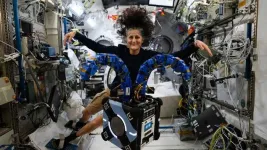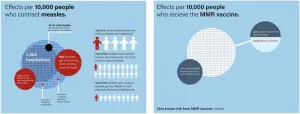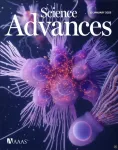(Press-News.org) LA JOLLA, CA—Scientists at La Jolla Institute for Immunology (LJI) have discovered how a mutated gene kicks off a dangerous chain of events during blood cell production.
The study, published recently in the Proceedings of the National Academy of Sciences, reveals how a mutated gene called ASXL1 is involved in a disease called clonal hematopoiesis, a precursor to malignant diseases such as myeloid malignancies and chronic monomyelocytic leukemia.
"We know that many diseases—and all cancers—are driven by mutations in the genome," says LJI Instructor Zhen Dong, Ph.D., who served as first author of the new study. "We showed how mutated ASXL1 may give rise to dysfunctional cells in your bone marrow and blood."
Dong co-led the study with LJI Professor Anjana Rao, Ph.D. Rao is a well-known expert on the genetic drivers behind immune cell dysfunction and cancer development.
Mutated blood cells take over
For the new study, the scientists investigated a potential link between mutated ASXL1 and an age-related disease called clonal hematopoiesis. Patients with clonal hematopoiesis have trouble making healthy red and white blood cells. Instead, these patients start to produce blood cells with scrambled genomes, which eventually develop into cancers.
All blood cells are derived from special cells called hematopoietic stem cells (HSCs), whose differentiated progeny normally repopulate the blood. Clonal hematopoiesis develops when a single HSC acquires growth-promoting mutations and begins to churn out many, many clones of itself. Eventually, these mutated blood cells become over-represented in the blood—which can lead to major health issues, such as cancer and inflammation, especially inflammatory heart disease.
"Your genome becomes very unstable," says Dong. "These 'bad elements' cause new mutations and harm your normal, healthy cells."
For some patients with clonal hematopoiesis, the repetitive DNA sequences make cells think they are infected by a virus. This confusion triggers immune defenses within blood cells themselves, leading to harmful inflammation that damages healthy tissues as well. This is an especially big problem for the heart, which then has to deal with a flood of inflammatory molecules as it pumps blood through the body.
"The mutation-containing HSCs give rise to proinflammatory immune cells—exacerbating heart inflammation and cardiovascular disease—and may induce or accelerate heart failure," says Dong.
For other patients, the scrambled genome causes additional problems in expanded cells already predisposed to grow more quickly than normal. These patients end up with a rapidly expanding number of abnormal HSCs and myeloid cells—which can lead to myeloid malignancies, lymphoid malignancies, chronic monomyelocytic leukemia, and other forms of leukemia.
"The abnormal repetitive and transposable element sequences can de-repress certain silent genes that could promote cell growth by allowing cells to adapt more efficiently to the changing environment," says Dong. "And that's good for highly proliferating cells, which become 'addicted' to the bad proteins that hurt normal cells."
So what triggers clonal hematopoiesis?
ASXL1 mutations are very common in patients with clonal hematopoiesis and some other blood diseases. In fact, Rao led a previous Nature Communications investigation into the role of mutated ASXL1 in myeloid leukemias. Still, scientists haven't known exactly how this mutated gene affects blood cell development, growth or function.
The LJI team used mouse models with mutated ASXL1 to solve this mystery. Because clonal hematopoiesis develops as a person ages, Dong worked with mice between 10 months and two years old, the equivalent to about 70 years old in humans.
The researchers used a technique called mass spectrometry to uncover exactly how mutated ASXL1 altered the normal hematopoietic stem cells—the cells that serve as precursors to both red and white blood cells. This work was done in collaboration with LJI's Global Autoimmune Institute Assistant Professor Sam Myers, Ph.D., who was a researcher at the Broad Institute at the time.
Rao, Dong, and their colleagues discovered that mutating the ASXL1 gene wrecked havoc on the normal workings of a tightly packed form of DNA called heterochromatin.
Heterochromatin is important for blood cell development because it "silences" potentially harmful genes—and genes that are normally shut off as a cell differentiates. Thanks to heterochromatin, hematopoietic stem cells can develop and mature correctly into all types of blood cells, such as red blood cells or white blood cells (which have specialized jobs as T cells, B cells, and more).
In the new study, mutating the ASXL1 gene spelled disaster for blood cells. Without heterochromatin working properly, hematopoietic stem cells never matured into normal blood cell lineages, including the lymphocytes, immune cells, and normal red or white blood cells.
The researchers could see that the mutated ASXL1 proteins interacted with a protein complex in cells—called the EHMT1-EHMT2 histone methyltransferase complex—to kick off a dangerous domino effect. The altered protein complex reduced H3K9me2 and H3K9me3, two repressive histone marks needed for silencing heterochromatin, making the tightly packed heterochromatin uncoil. This change led to the reactivation of previously silenced genes and transposable elements.
This alternation was also a huge problem for cells. Heterochromatin normally suppresses a very large number of repetitive and transposable elements, also called "jumping genes," which are repressed in healthy cells. Transposable elements can randomly be excised and re-inserted into the genome, leading to genome instability.
Even if they cannot jump, transposable elements can become highly expressed and in turn inappropriately activate the expression of nearby genes, especially those in heterochromatin. This process adds to the genome confusion and aberrant gene expression caused by mutant ASXL1 proteins.
The researchers then compared the mutated mouse models to normal mice. They found that the ASXL1-mutated mice had the same scrambled genomes and harmful DNA repeats found in chronic monomyelocytic leukemia patients with mutated ASXL1.
Next steps for preventing disease
Dong says the LJI team is investigating how mutated ASXL1 proteins interact with other important players in our immune cells. So far, their work suggests that ASXL1 also interacts with a protein called TET2, which is also frequently mutated in clonal haematopoiesis and in many blood cancers. Functional TET2 proteins are critical for normal DNA demethylation, so there's an urgent need to understand how these genes affect each other.
"Both the TET2 and ASXL1 genes can be mutated, individually or together, in clonal hematopoiesis, leukemia, and a premalignant form of cancer called myelodysplastic syndrome," says Dong. "We need to ask how these two genes might cooperate in these diseases."
Dong adds that further research might also shine a light on the origins of some neurodevelopmental disorders. Other genes from the ASXL family can be mutated in neural stem cells, which may lead to speech difficulties, motor delay, intellectual delays, and even death for some pediatric patients.
"I'm very inspired and motivated to continue this project," says Dong, whose son has a neurodevelopmental delay. "We need to figure out more about all the members of the ASXL gene family."
Additional authors of the study, "A mutant ASXL1-EHMT complex contributes to heterochromatin dysfunction in clonal hematopoiesis and chronic monomyelocytic leukemia," include co-first author Hugo Sepulveda, Leo Josue Arteaga Vazquez, Chad Blouin, Jenna Fernandez, Moritz Binder, Wen-Chien Chou, Hwei-Fang Tien, Mrinal Patnaik, Geoffrey J. Faulkner, and Samuel A. Myers.
This research was supported by the National Institutes of Health (grants R35 CA210043, R01 CA272496, R35GM147554, GNT1173711, 112-2314-B-075A-004- and 112-2314-B-002-095-MY3, and MOHW109-TDU-B-211-134009), The Mater Foundation, the Pew Latin-American Fellows Program from The Pew Charitable Trusts, and a Fellowship from the California Institute for Regenerative Medicine.
DOI: 10.1073/pnas.2413302121
About La Jolla Institute for Immunology
The La Jolla Institute for Immunology is dedicated to understanding the intricacies and power of the immune system so that we may apply that knowledge to promote human health and prevent a wide range of diseases. Since its founding in 1988 as an independent, nonprofit research organization, the Institute has made numerous advances leading toward its goal: life without disease. Visit lji.org for more information.
END
LJI researchers shed light on devastating blood diseases
Scientists show how a mutated gene harms red and white blood cells
2025-01-08
ELSE PRESS RELEASES FROM THIS DATE:
ISS National Lab announces up to $650,000 in funding for technology advancement in low Earth orbit
2025-01-08
KENNEDY SPACE CENTER (FL), January 7, 2025 – The International Space Station (ISSInternational Space Station) National Laboratory is soliciting flight concepts for technology advancement that utilizes the space-based environment of the orbiting laboratory. This solicitation, “Technology Advancement and Applied Research Leveraging the ISS National Lab,” is open to a broad range of technology areas, including chemical and material synthesis in space, translational medicine, in-space edge computing, and in-space servicing, assembly, and manufacturing. It also encompasses the application of space station remote sensing data to improve geospatial analytics ...
Scientists show how sleep deprived brain permits intrusive thoughts
2025-01-08
A new study has shown that sleep deprivation can inhibit the brain’s ability to suppress unwanted memories and intrusive thoughts.
Scientists at the University of York, in collaboration with the University of East Anglia, have shown that sleep deprivation interferes with the ability of the prefrontal area of the brain to restrict the retrieval of memories that would have otherwise been suppressed.
Dr Scott Cairney from the University of York said: “Memories of unpleasant experiences often intrude into our conscious ...
UC Irvine-led team discovers potential new therapeutic targets for Huntington’s disease
2025-01-08
Irvine, Calif., Jan. 8, 2025 — A University of California, Irvine-led research team has discovered intricate molecular mechanisms driving the RNA processing defects that lead to Huntington’s disease and link HD with other neurodegenerative disorders such as amyotrophic lateral sclerosis, frontotemporal lobar dementia and Alzheimer’s disease.
The findings may pave the way for neurodegenerative disorder researchers to collaborate and share therapeutic strategies across diseases, opening additional avenues for treatment.
While it’s known that HD is caused by an abnormal ...
Paul “Bear” Bryant Awards 2024 Coach of the Year finalists named
2025-01-08
HOUSTON, January 8, 2025 — Eight active college football coaches make up the American Heart Association’s 2024 Paul “Bear” Bryant Coach of the Year Award finalist list. The award is given each January to a college football coach for contributions that make the sport better for athletes and fans alike by demonstrating grit, integrity and a winning approach to coaching and life – both on and off the field. The Paul “Bear” Bryant Coach of the Year Award is the only college football coaching honor ...
Countering the next phase of antivaccine activism
2025-01-08
In a recent essay, pediatrician-scientist Peter Hotez proposes a focus on local data, improved benefit-risk communications, actively countering health disinformation, and state-level action to address antivaccine sentiment in the U.S.
Anti-vaccine sentiment isn’t going away any time soon. In a new opinion article published January 8 in the open-access journal PLOS Global Public Health, Prof. Peter Hotez from Baylor College of Medicine, outlines key actions to stem the momentum of anti-vaccine advocates in the U.S. over the next five years.
Anti-vaccine activities in the U.S. transformed to become a politically charged movement ...
Overcoming spasticity to help paraplegics walk again
2025-01-08
Electrical stimulation of the spinal cord is a promising strategy for reestablishing walking after spinal cord injury, recent studies show. But for patients suffering from muscle spasms, the stimulation protocols have a limited effect due to the unpredictable behaviour of involuntary muscle stiffness related to spasticity. Muscle spasticity affects almost 70% of spinal cord injured patients
Now, scientists at EPFL, Università San Raffaele and Scuola Sant’Anna have found a promising way to address and reduce muscle spasticity in patients with incomplete spinal cord injury. ...
Tiny microbe colonies communicate to coordinate their behavior
2025-01-08
A new study published in Science Advances reveals evidence of electrical signaling and coordinated behavior in choanoflagellates, the closest living relatives of animals. This elaborate example of cell communication offers key insights into the early evolution of animal multicellularity and nervous systems.
Researchers from the Burkhardt group at the Michael Sars Centre, University of Bergen, uncovered a remarkable diversity of behaviors within the rosette-shaped colonies of the choanoflagellate Salpingoeca rosetta - and the small organisms held even more surprises. “We found communication among the cells of the colonies, which regulates shape and ciliary beating across the rosette,” ...
Researchers develop new technology for sustainable rare earth mining
2025-01-08
Ion-adsorption rare earth deposits (IADs) are primary sources of heavy rare earth elements (HREE), supplying over 90% of the global demand for HREE. However, the current ammonium-salt-based in-situ mining technique has led to severe environmental impacts.
To facilitate sustainable REE mining, Professors ZHU Jianxi and HE Hongping’s team from the Guangzhou Institute of Geochemistry of the Chinese Academy of Sciences (CAS) has developed a green and efficient electrokinetic mining (EKM) technology.
Their work was published in Nature Sustainability on Jan. 6, 2025.
To address the challenges of sustainable and efficient REE extraction, ...
Words activate hidden brain processes shaping emotions, decisions, and behavior
2025-01-08
In an unprecedented new study in the journal Cell Reports, researchers have shown neurotransmitters in the human brain are released during the processing of the emotional content of language, providing new insights into how people interpret the significance of words.
The work, conducted by an international team led by Virginia Tech scientists, offers deeper understanding into how language influences human choices and mental health.
Spearheaded by computational neuroscientist Read Montague, a professor of the Fralin Biomedical Research Institute at VTC and ...
Understanding survival disparities in cancer care: A population-based study on mobility patterns
2025-01-08
A recent study published in Health Data Science, led by Dr. Fengyu Wen from the Institute of Medical Technology at Peking University Health Science Center and Professor Luxia Zhang from the National Institute of Health Data Science at Peking University, reveals significant survival disparities among cancer patients depending on their mobility patterns for medical care.
The study analyzed data from over 20,000 cancer patients in Shandong Province, China, to assess the impact of intra-city, local center, and national center mobility patterns on survival rates. Patients who traveled to local or national healthcare centers had higher five-year survival ...
LAST 30 PRESS RELEASES:
Tracing the quick synthesis of an industrially important catalyst
New software sheds light on cancer’s hidden genetic networks
UT Health San Antonio awarded $3 million in CPRIT grants to bolster cancer research and prevention efforts in South Texas
Third symposium spotlights global challenge of new contaminants in China’s fight against pollution
From straw to soil harmony: International team reveals how biochar supercharges carbon-smart farming
Myeloma: How AI is redrawing the map of cancer care
Manhattan E. Charurat, Ph.D., MHS invested as the Homer and Martha Gudelsky Distinguished Professor in Medicine at the University of Maryland School of Medicine
Insilico Medicine’s Pharma.AI Q4 Winter Launch Recap: Revolutionizing drug discovery with cutting-edge AI innovations, accelerating the path to pharmaceutical superintelligence
Nanoplastics have diet-dependent impacts on digestive system health
Brain neuron death occurs throughout life and increases with age, a natural human protein drug may halt neuron death in Alzheimer’s disease
SPIE and CLP announce the recipients of the 2025 Advanced Photonics Young Innovator Award
Lessons from the Caldor Fire’s Christmas Valley ‘Miracle’
Ant societies rose by trading individual protection for collective power
Research reveals how ancient viral DNA shapes early embryonic development
A molecular gatekeeper that controls protein synthesis
New ‘cloaking device’ concept to shield sensitive tech from magnetic fields
Researchers show impact of mountain building and climate change on alpine biodiversity
Study models the transition from Neanderthals to modern humans in Europe
University of Phoenix College of Doctoral Studies releases white paper on AI-driven skilling to reduce burnout and restore worker autonomy
AIs fail at the game of visual “telephone”
The levers for a sustainable food system
Potential changes in US homelessness by ending federal support for housing first programs
Vulnerability of large language models to prompt injection when providing medical advice
Researchers develop new system for high-energy-density, long-life, multi-electron transfer bromine-based flow batteries
Ending federal support for housing first programs could increase U.S. homelessness by 5% in one year, new JAMA study finds
New research uncovers molecular ‘safety switch’ shielding cancers from immune attack
Bacteria resisting viral infection can still sink carbon to ocean floor
Younger biological age may increase depression risk in older women during COVID-19
Bharat Innovates 2026 National Basecamp Showcases India’s Most Promising Deep-Tech Ventures
Here’s what determines whether your income level rises or falls
[Press-News.org] LJI researchers shed light on devastating blood diseasesScientists show how a mutated gene harms red and white blood cells




